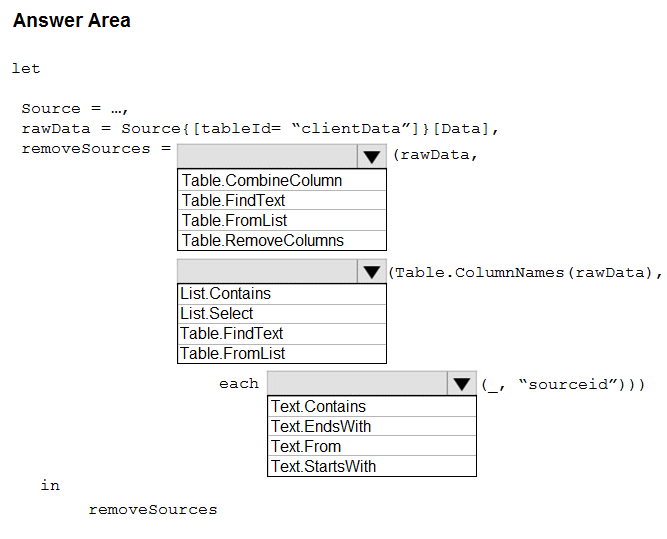| Question 96 What type of Measure uses SUM to aggregate over one set of dimensions and a different aggregation over a different set of dimension? A. Additive B. Aggregate C. Semi-additive |
96. Click here to View Answer
Answer is (C) Semi-additive
| Question 97 What type of functions enable you to manipulate data using time periods? A. Time intelligence B. Comparer functions C. Value functions |
97. Click here to View Answer
Answer is (A) Time intelligence
| Question 98 Which two functions will help you compare dates to the previous month? A. TOTALYTD and PREVIOUSMONTH B. CALCULATE and TOTALTYD C. CALCULATE and PREVIOUSMONTH |
98. Click here to View Answer
Answer is (C) CALCULATE and PREVIOUSMONTH
| Question 99 You have an API that returns more than 100 columns. The following is a sample of column names. – client_notified_timestamp – client_notified_source – client_notified_sourceid – client_notified_value – client_responded_timestamp – client_responded_source – client_responded_sourceid – client_responded_value You plan to include only a subset of the returned columns. You need to remove any columns that have a suffix of sourceid. How should you complete the Power Query M code? To answer, select the appropriate options in the answer area.  |
99. Click here to View Answer
Box 1: Table.RemoveColumns
When you do Remove Columns Power Query uses the Table.RemoveColumns function
Box 2: List.Select
Get a list of columns.
Box 3: Text.EndsWith
Reference:
https://community.powerbi.com/t5/Power-Query/Remove-columns-containing-a-certain-value/td-p/759657
| Question 100 You are analyzing a performance issue with a DAX measure. Which tool in Power BI can help you identify bottlenecks? A. Model view B. Query Diagnostics C. Performance analyzer D. Power Query Advanced Editor |
100. Click here to View Answer
Answer: C. Performance analyzer
